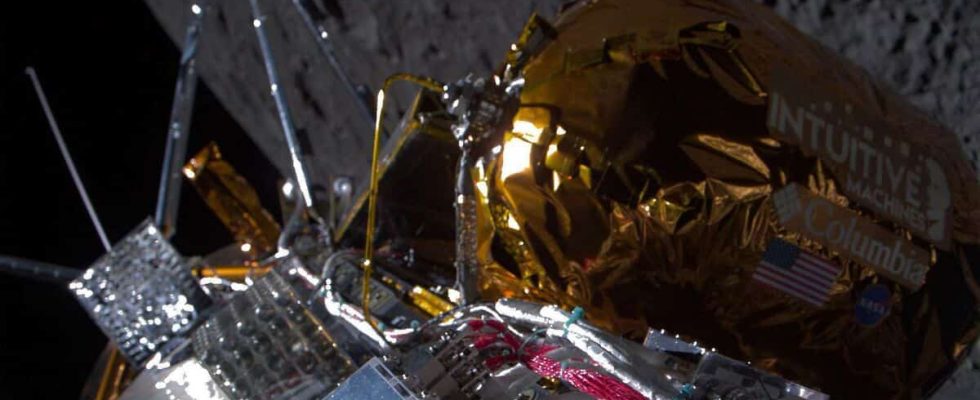The American company Intuitive Machines announced Friday that its probe was doing well the day after its moon landing, the first by an American device in more than 50 years and an unprecedented success for a private company.
• Read also: The Odysseus probe lands on the Moon; a first in the private sector
Intuitive Machines’ Odysseus probe landed on the Moon at 11:23 p.m. GMT on Thursday, at the end of a final descent full of twists and turns, after a failure of its navigation system and complicated communication just after landing.
The young company, founded in 2013 and based in Houston, Texas, is now working to recover the first images taken from the lunar surface and the first scientific data, she said.
The device notably transports scientific instruments from NASA, which wishes to explore the south pole of the Moon before sending its astronauts there as part of its Artemis missions.
Intuitive Machines confirmed Friday morning on X the proper functioning of the moon’s solar panels, essential to its energy supply.
- Listen to the interview with Olivier Hernandez, director of the Planetarium and astrophysicist expert in instrumentation, specialist in galaxies and exoplanets, via QUB :
The company, however, indicated that it was continuing to collect more information on the position and orientation of the aircraft, after declaring Thursday evening that it had landed “upright”.
A press conference is scheduled for late Friday afternoon US East Coast time.
In addition to the images taken by Odysseus himself, a small device equipped with cameras and called EagleCam, developed by the Embry-Riddle Aeronautical University, had to be ejected from the lander at the last moment to capture from the outside the landing.
Unfortunately, due to complications encountered during this phase, the deployment of EagleCam has been postponed, the university said Friday. This is now planned during the ground mission, which would still make it possible to obtain an external view of the lander.
Backup solution
Intuitive Machines has already received congratulations from all over the world, including from competing companies that themselves recently attempted the maneuver, without success: the Japanese start-up ispace, which crashed on the Moon last year last, and the American Astrobotic, which failed to reach the star in January.
The moon landing also marks a great success for NASA, which signed a $118 million contract with Intuitive Machines to carry six scientific instruments during this mission, named IM-1.
One of them probably saved the trip. The lander’s navigation system did not work as expected, so the company had to improvise.
During an additional tour of the Moon added just before the dreaded descent, employees programmed a NASA laser system at the last minute to guide the lander.
This system, which aims to improve the precision of landings, was to be activated for the first time in space during this mission, during a test. But it was eventually successfully used as the primary navigation system.
Odysseus must now operate for approximately seven days, before night settles on the lunar south pole.
Lunar economy
This mission is the first for Intuitive Machines, but the second for NASA’s new lunar delivery program, called CLPS. A first mission, that of Astrobotic, failed last month.
Instead of sending scientific instruments to the Moon using its own vehicles, the American space agency decided to order this service from private companies.
This strategy should allow him to make the trip more often and for less money. But also to stimulate the development of a lunar economy, capable of supporting a lasting human presence on the Moon — one of the goals of NASA’s Artemis program.
Intuitive Machines’ stock was up about 20% on the New York Stock Exchange midday Friday.
In total, four additional US lunar missions are officially planned this year under the CLPS program, including two more from Intuitive Machines.
